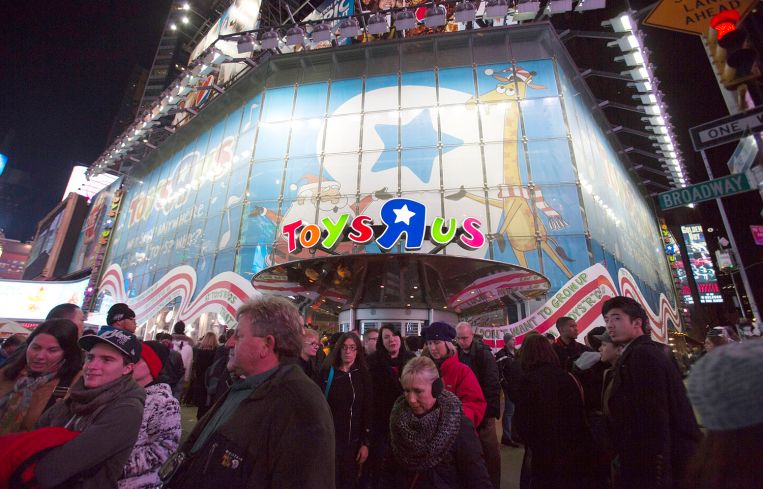Toys ‘R’ Us Bankruptcy Could Risk $500M in CMBS
By Mack Burke January 31, 2018 8:28 pm
reprints
The announcement of the closure of 182 Toys “R” Us stores last week—part of the retailer’s Chapter 11 bankruptcy filing last fall—has put roughly $500 million in commercial mortgage-backed securities (CMBS) at risk, according to a report from Morningstar Credit Ratings.
Analysts at the rating agency identified 20 CMBS loans, with a combined balance of roughly $500 million, that could come under fire due to occupancy concerns following the closings.
The report, issued on Tuesday, indicates that there are 40 CMBS loans—with a combined balance of $1.47 billion—that are exposed to the recent Toys “R” Us store closures. While 20 of those loans—with a combined balance of $500 million—are of concern due to occupancy issues following Toys “R” Us’ departure, the remaining 20 loans haven’t raised red flags due to the fact that Toys “R” Us doesn’t represent a large enough portion of each asset’s leasable space. Of the latter population, the two largest are the $56 million loan backed by Akers Mill Square in Atlanta, Ga., and the $123 million loan on The Plant at San Jose in San Jose, Calif.
The loan on Akers Mill Square was securitized in the Deutsche Bank-sponsored COMM 2014-LC15 transaction and represents 6.31 percent of its roughly $695 million securitized balance. The loan on The Plant at San Jose in San Jose, Calif.—securitized in the Wells Fargo-sponsored WFRBS 2013-C14 CMBS deal—constitutes 8.8 percent of the deal’s roughly $1 billion balance.
In September 2017—prior to the bankruptcy filing—a Morningstar Toys “R” Us risk report highlighted two of the largest CMBS loans at risk, should the retailer file for bankruptcy. The $507.6 million loan securitized in the Goldman Sachs/ Bank of America-sponsored TRU 2016-TOYS deal is the CMBS loan with the largest exposure.
Although the loan is backed by a portfolio of 123 Toys “R” Us and Babies “R” Us stores, Morningstar analysts noted that just seven locations with an allocated property balance of $3.2 million are exposed to a closing store and that the stores’ geographic diversity and low loan-to-value ratio (56.6 percent) significantly mitigates loan default risk.
Analysts also noted that the largest asset within TRU 2016-TOYS accounts for only 2.4 percent of the securities balance and that a small number of stores closing is unlikely to have a significant effect on the deal.
On Sept. 18, 2017, Toys “R” Us filed for Chapter 11 bankruptcy, making the toy store chain the latest retailer to feel the pressures of operating brick-and-mortar shops in an age of dominance for e-commerce and online shopping.
In an effort to restructure and reorganize in bankruptcy proceedings, Toys “R” Us announced on Jan. 23 plans to shutter 182 stores—or 20 percent of its U.S. portfolio, with about half of the stores falling under the Babies “R” Us brand—that have failed to meet “performance standards,” as Commercial Observer reported on Jan. 24.
A spokeswoman for Toys “R” Us previously told CO that the company had until Feb. 6 for the court to approve its plan to shutter it’s targeted locations. If approved, the closures would have commenced in January, with “the majority” closing in mid-April, according to a letter on the company’s website to customers and signed by company CEO Dave Brandon.
Toys “R” Us was able to extend its the court-imposed deadline to decide which stores to close to the end of August, as part of a deal with creditors, Bloomberg reported on Jan. 23. In exchange, the company agreed to pay landlords’ fees related to the bankruptcy case as well as finish this round of store closures by the end of August or it will be unable to close any of the stores on its list until after the 2018 holiday season.
A representative for Toys “R” Us could not immediately be reached.


